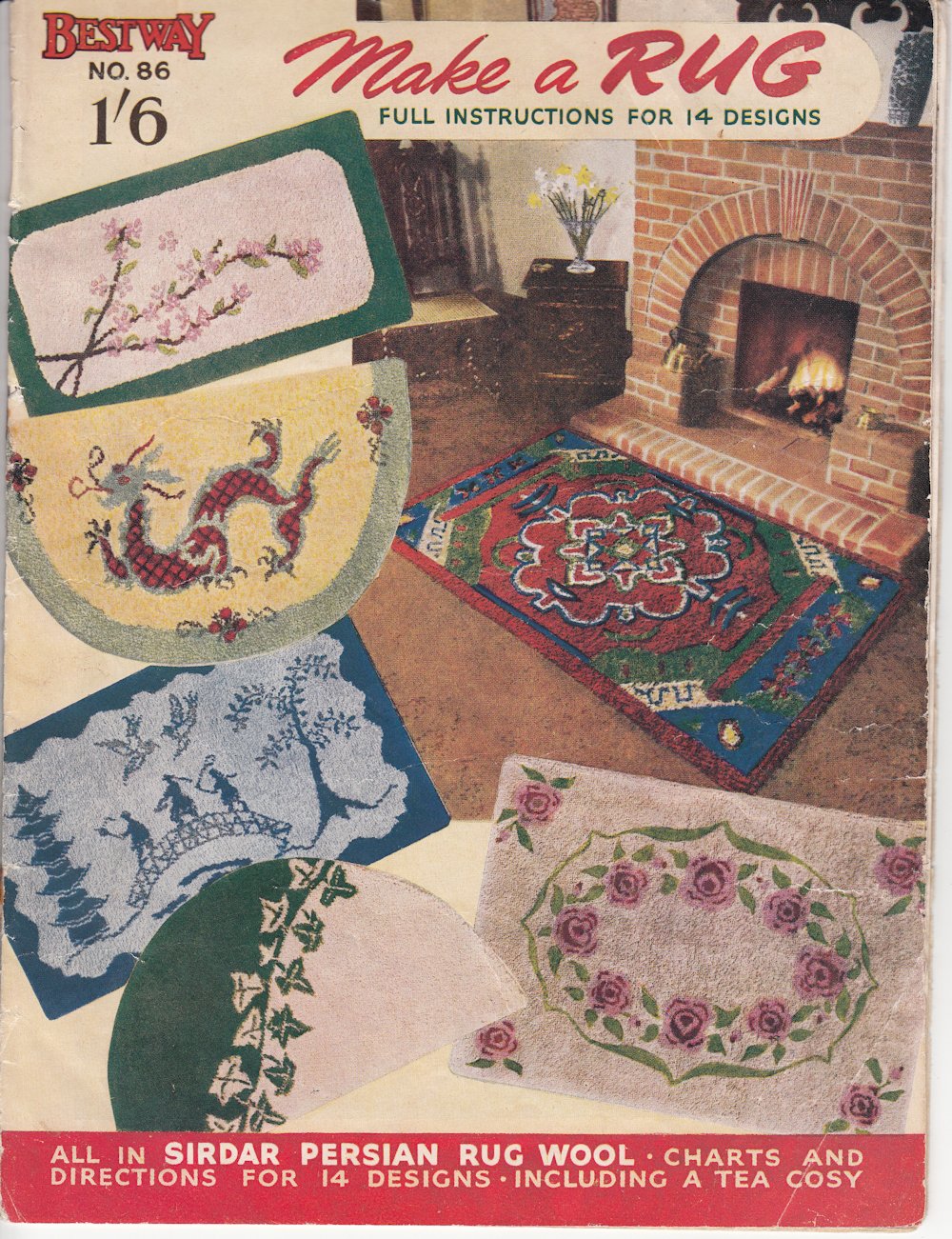 Sirdar leaflet |
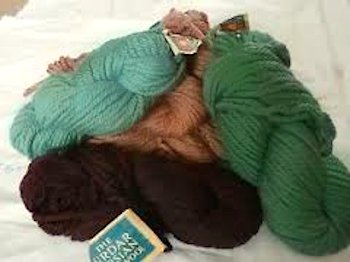 Skeins of Sirdar Persian Rug Wool |
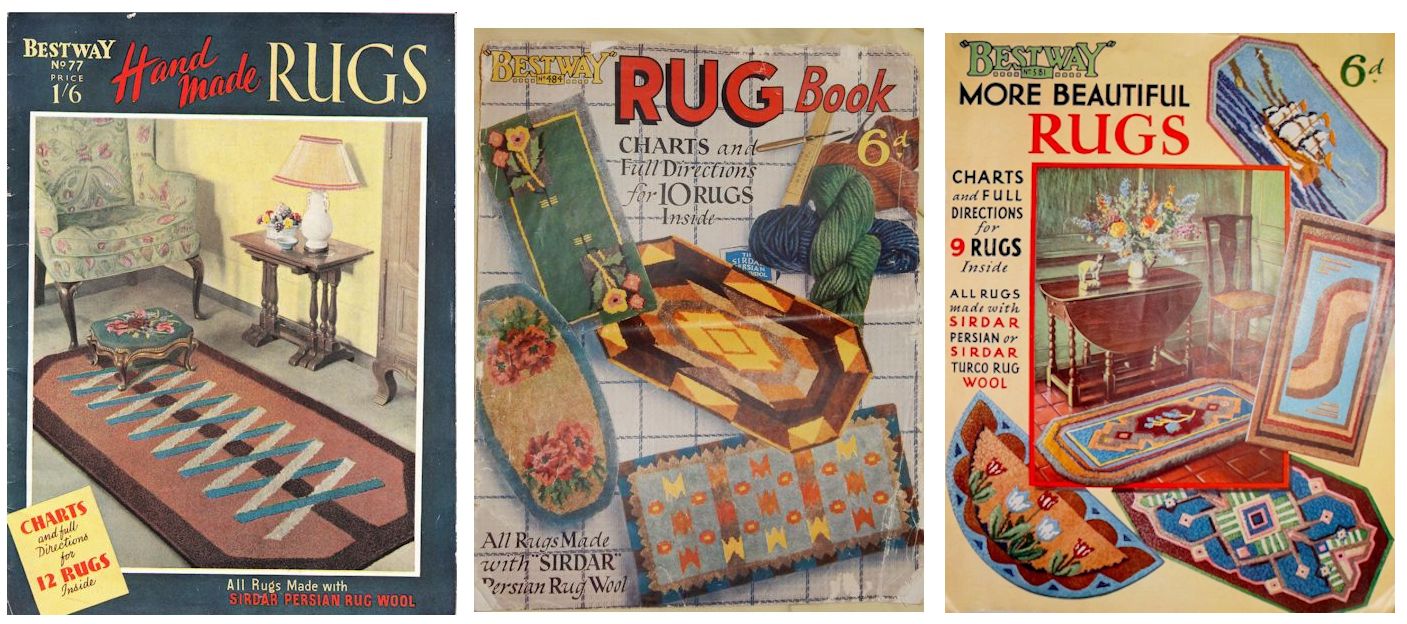
|
|
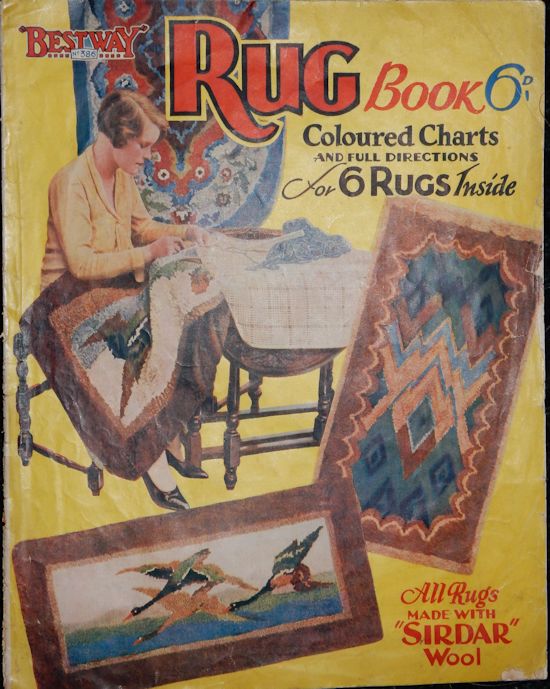
|
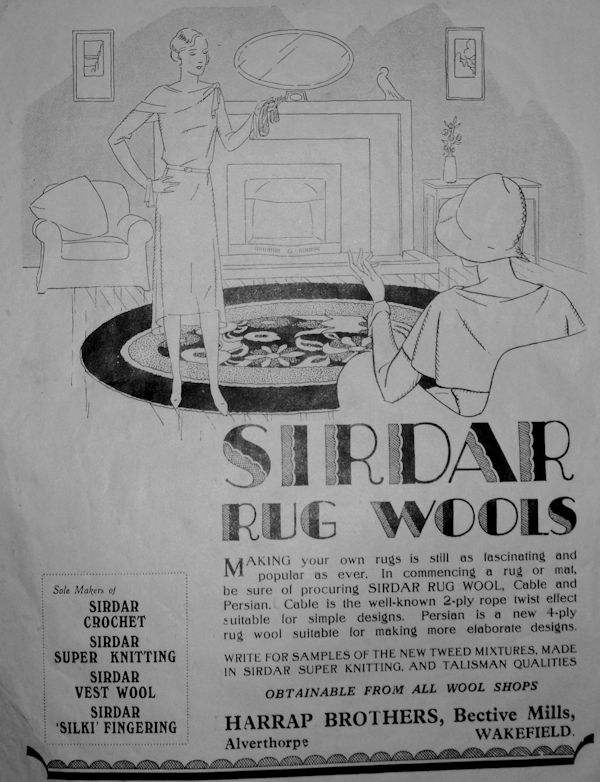
|
RUG-MAKING SUPPLIES - SIRDAR / HARRAP BROS.
In 1880, Tom and Henry Harrap established their wool spinning company in Ossett. In 1890, the successful business moved to Alverthorpe, Wakefield. Sirdar's rug wool was mentioned in THE BRITISH MONTHLY, January, 1905: ""Things Worth Noting Sirdar Wool. If you are in the habit of making your own rugs, Messrs. Harrap Bros, have what is known as the Sirdar Rug Wool, which is considered first and best for rug and mat makers. This wool is endless in wear, bright in finish, and of superior quality. These various wools may be had in numerous art shades from the principal dealers, but it is important to insist on having " Sirdar," and take no substitute. The manufacturers will be pleased to supply the plain directions for rug and mat making absolutely free, if you will write to Messrs. Harrap Bros."
By 1934 the company was run by Tom’s son, Fred Harrap, who concentrated on producing hand-knitting yarns for sale to independent retailers. In 1952, he chose Sirdar Spinning Ltd ("Sirdar" being Arabic for "leader") as the company and "Sirdar" as the brand name after Lord Kitchener’s appointment as Sirdar of the Egyptian Army. Fred's daughter, Jean Tyrrell, had been a director since 1952 and took over the running of the company in the 1960s and didn't retire until she was 80. She was known to many as "Miss Harrap" and made Sirdar an international brand producing knitting wool out of Bective Mills, Alverthorpe. In the 1950s/60s, they also produced “Persian” Rug wool (in skeins of single-ply yarn) and rug patterns for latch hooking and stitched rugs. This was cut to length by the customer who could vary the texture and thickness by selecting how many strands went into each knot/tuft. Jean Tyrrell predicted a weakening demand for knitting wool and a rising demand for floor coverings so Sirdar shrewdly acquired local carpet manufacturer Burmatex. Latch-hooking and hand-knitting became less popular in the 1980s and 1990s. In 2007, there was a management buyout of Sirdar plc which again concentrates on hand-knitting yarns.
I’ve used Sirdar wool and it gives a nice dense pile and soft texture, but I find the pieces need to be cut slightly longer than Anchor or Iriss.
 Sirdar leaflet |
 Skeins of Sirdar Persian Rug Wool |

|
|

|

|
The booklet below was printed by Causton of Leeds and London, and is not dated, but has an early 1900s appearance. The text on the first page begins: "In View of the ever increasing popularity of the SIRDAR CABLE WOOL FOR RUG AND MAT MAKING, and because of the numerous enquiries which are made as to the method of working and the producing of various designs, we are issuing this Booklet, giving full instructions how the Sirdar Rug Wool is worked, and shewing an entirely new set of designs worked in beautiful art Colors." It does not include conventional charts, but instead shows a quarter-section of the back of the finished rug in each design. (Description and photos provided by Peter Tylor of Vanished Eras
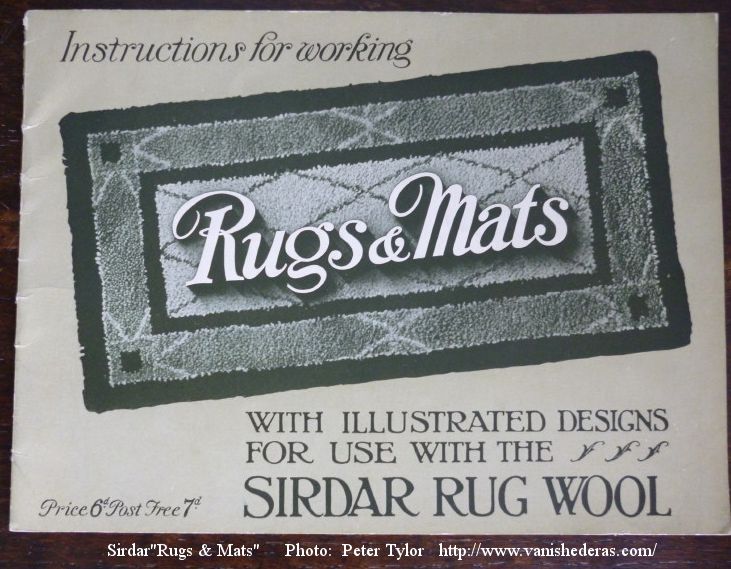 |
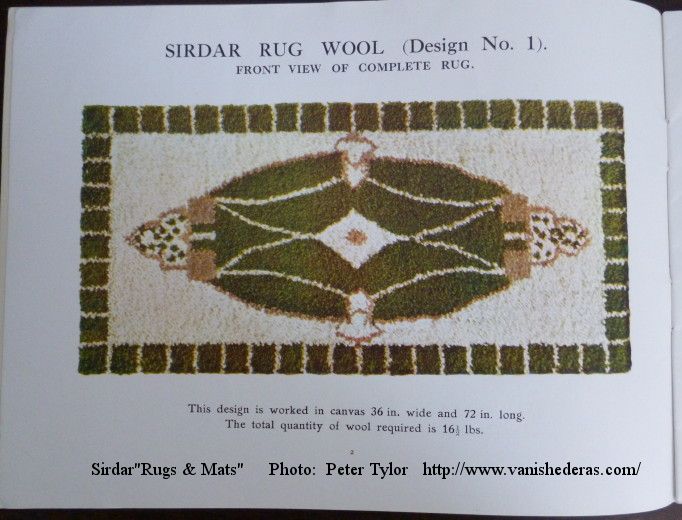
|
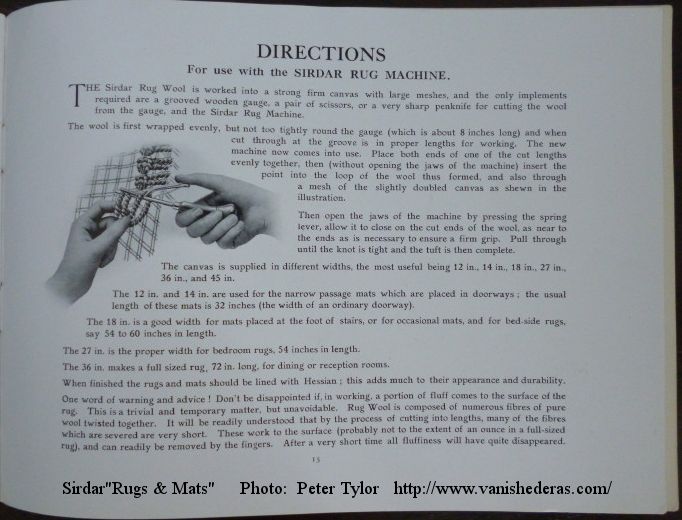 |
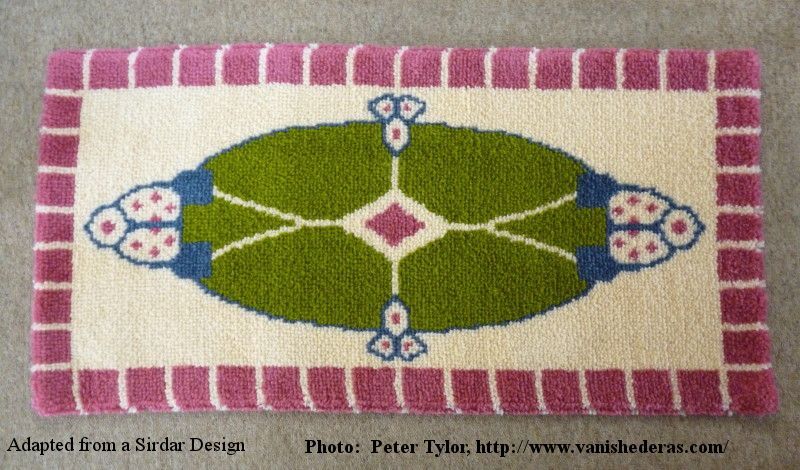 |
See Flickr where images and patterns can be downloaded at full resolution for your own use.
You are visitor number: